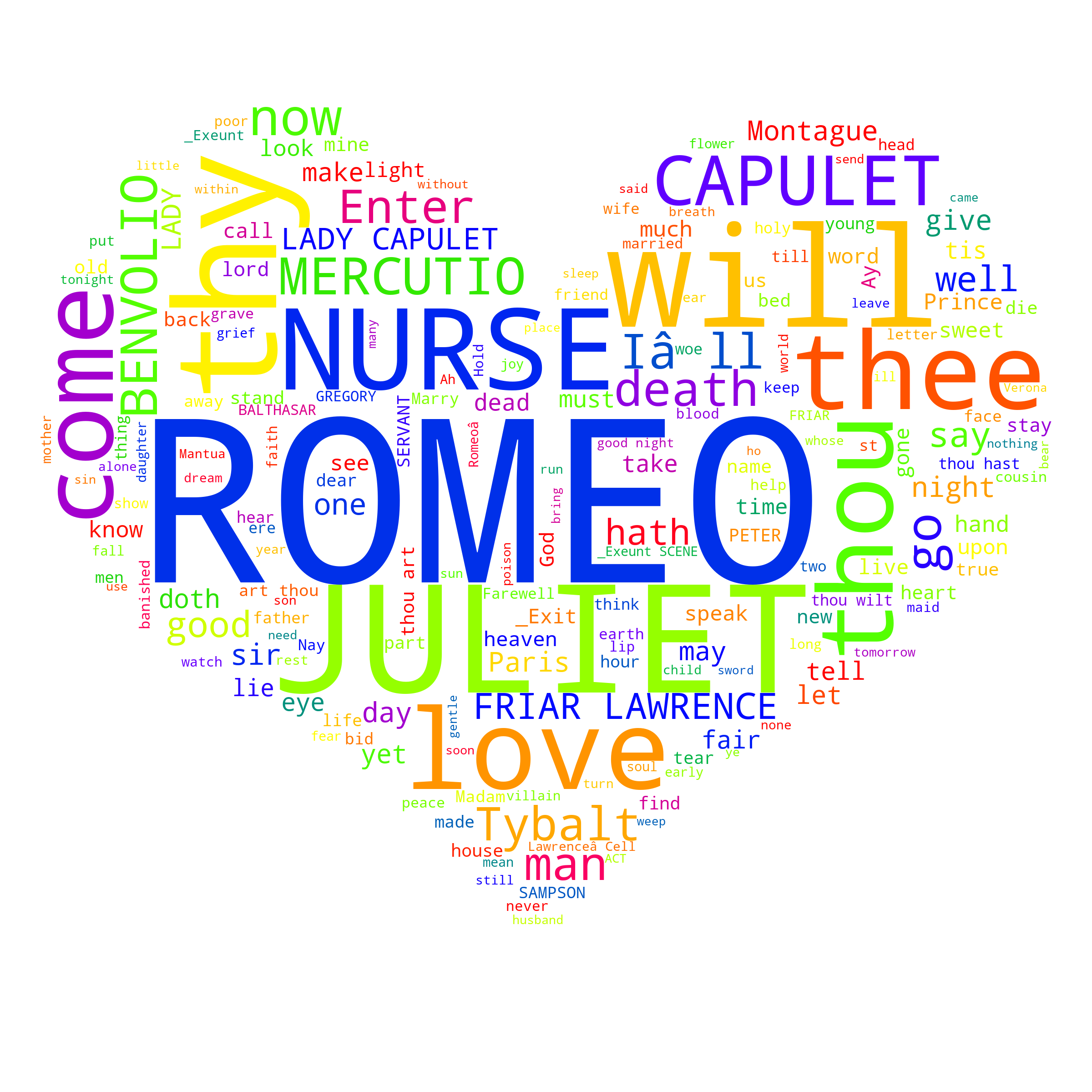NOTE: Before running this notebook, be sure to place your copy of RomeoAndJuliet.txt in the same folder as the notebook.
12.3.2 Visualizing Word Frequencies with Word Clouds¶
- Open source
wordcloudmodule’sWordCloudclass - Uses matplotlib under the hood
Installing the wordcloud Module¶
conda install -c conda-forge wordcloud- Windows users should run the Anaconda Prompt as an Administrator
Loading the Text¶
from pathlib import Path
text = Path('RomeoAndJuliet.txt').read_text()
Loading the Mask Image that Specifies the Word Cloud’s Shape¶
WordCloudfills non-white areas of a mask image with text- Load the mask using the
imreadfunction from theimageiomodule that comes with Anaconda
import imageio
mask_image = imageio.imread('mask_heart.png')
Configuring the WordCloud Object¶
- 400-by-200 pixels, unless you specify
widthandheight - If you specify a mask image without
widthandheight,WordClouduses the image’s size WordCloudassigns random colors from a color map- Matplotlib’s named color maps
- Complete list of
WordCloud’s keyword arguments
from wordcloud import WordCloud
wordcloud = WordCloud(width=1000, height=1000,
colormap='prism', mask=mask_image, background_color='white')
Generating the Word Cloud¶
WordCloud’sgeneratemethod receives the text to use in the word cloud as an argument and creates the word cloud, which it returns as aWordCloudobject
wordcloud = wordcloud.generate(text)
- removes stop words from the
textargument, using thewordcloudmodule’s built-in stop-words list - calculates the word frequencies for the remaining words
- builds the cloud with a maximum of 200 words by default, but can specify
max_wordskeyword argument
Saving the Word Cloud as an Image File¶
wordcloud = wordcloud.to_file('RomeoAndJulietHeart.png')
Generating a Word Cloud from a Dictionary¶
- If you have a dictionary of word counts,
WordCloud’sfit_wordsmethod can create a word cloud from it, but does not remove the stop words from the dictionary
Displaying the Image with Matplotlib¶
%matplotlib inline
import matplotlib.pyplot as plt
plt.imshow(wordcloud)

©1992–2020 by Pearson Education, Inc. All Rights Reserved. This content is based on Chapter 5 of the book Intro to Python for Computer Science and Data Science: Learning to Program with AI, Big Data and the Cloud.
DISCLAIMER: The authors and publisher of this book have used their best efforts in preparing the book. These efforts include the development, research, and testing of the theories and programs to determine their effectiveness. The authors and publisher make no warranty of any kind, expressed or implied, with regard to these programs or to the documentation contained in these books. The authors and publisher shall not be liable in any event for incidental or consequential damages in connection with, or arising out of, the furnishing, performance, or use of these programs.